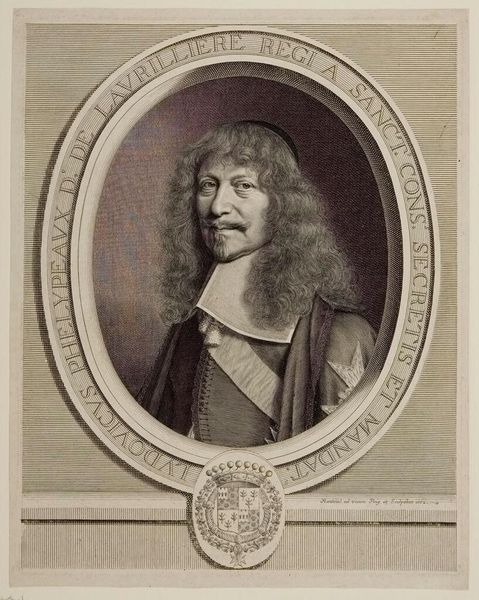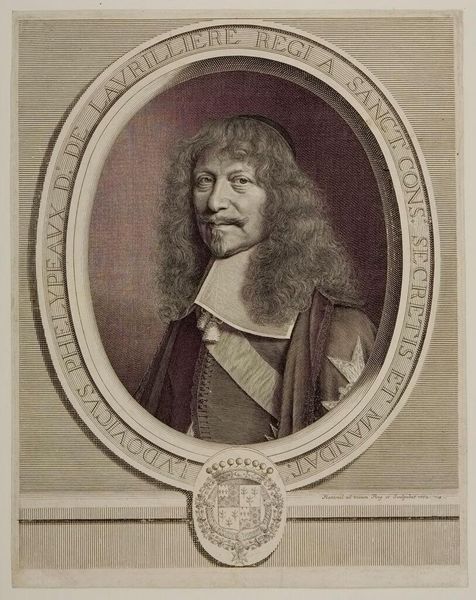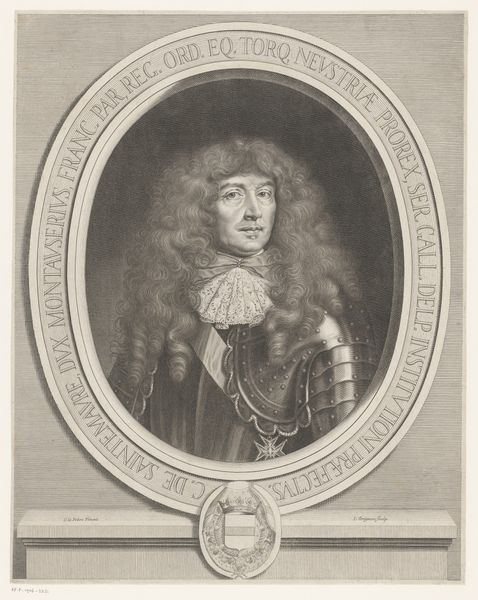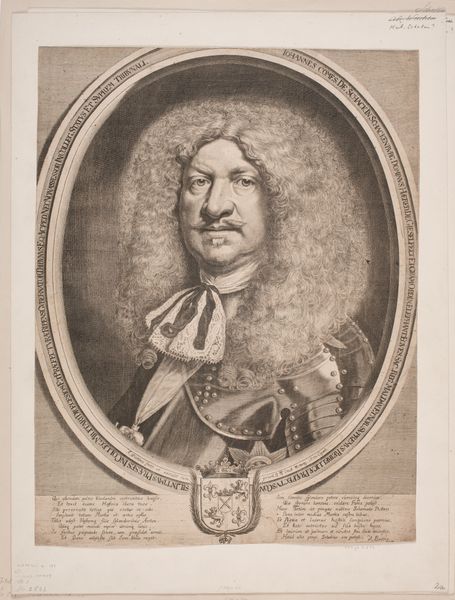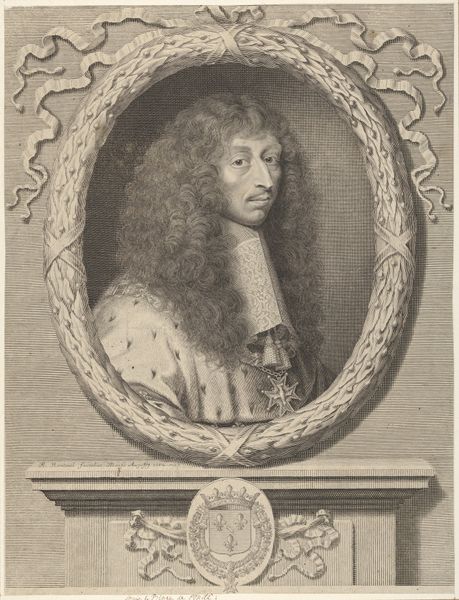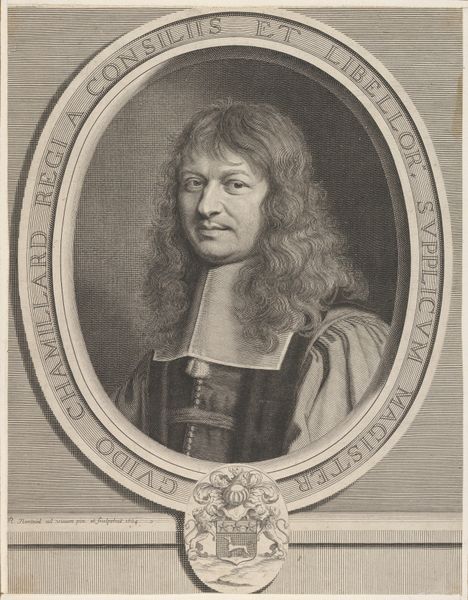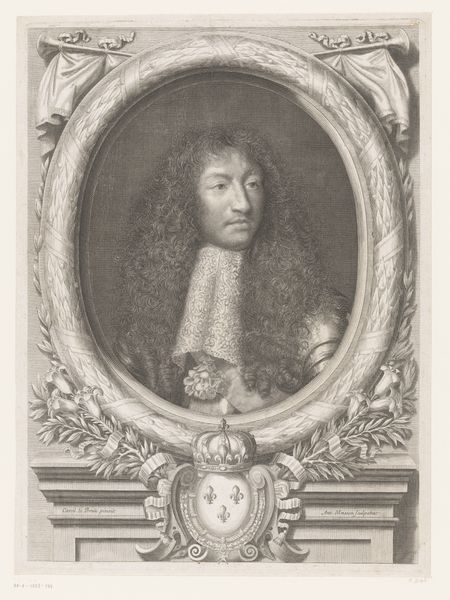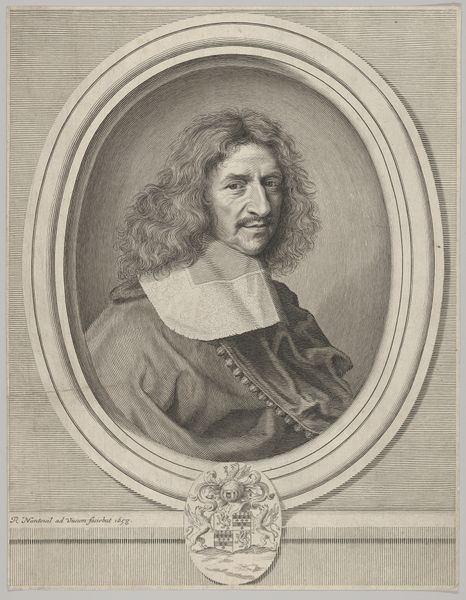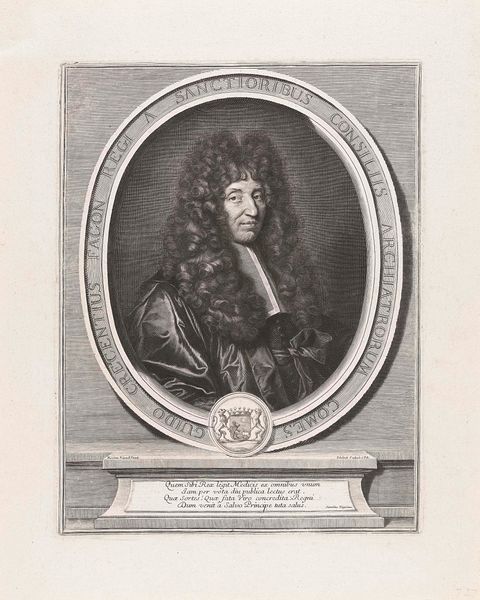
drawing, print, engraving
#
portrait
#
drawing
#
baroque
# print
#
history-painting
#
engraving
Dimensions: Sheet: 12 3/4 × 10 1/8 in. (32.4 × 25.7 cm)
Copyright: Public Domain
Editor: Here we have Robert Nanteuil's engraving of Louis-Phélypeaux de La Vrillière, created in 1662. The intricate lines and delicate shading give it a remarkable sense of depth. What strikes me is how formal and composed the whole piece seems, yet the man has a distinctly weary look about him. What do you see in this work? Curator: It is precisely this interplay between rigid formality and nuanced humanity that makes Nanteuil's portraits so compelling. Notice how the oval frame and the meticulously inscribed text serve as structural elements, confining and defining the portrait space. Yet, within this framework, the artist achieves remarkable texture. Observe the complex patterns of lines that compose the hair, and the subtle variations in tone used to sculpt the face. How does this attention to detail contribute to your understanding of the subject? Editor: Well, the detail definitely pulls me in. The hair, in particular, seems almost like a separate element, a frame within a frame, adding to the overall complexity of the image. And the shading around the eyes… it adds to that weary look I mentioned. Curator: Indeed. Nanteuil was a master of engraving technique, and his skill is evident in the way he manipulates light and shadow to convey depth and character. But what about the composition as a whole? Does the overall arrangement of elements contribute to your reading of the work? Consider how the inscription and the heraldic crest function within the design. Editor: I hadn't really considered the text and the crest in that way. They definitely add another layer of formality, anchoring the figure within a specific social context. It's like Nanteuil is creating both an individual portrait and an emblem of status simultaneously. Curator: Precisely. Nanteuil uses formal devices of portraiture conventions to create the powerful individual he’s capturing. How have your perceptions of the portrait shifted through our conversation? Editor: I appreciate how focusing on the formal elements reveals deeper meaning, like the tension between individual expression and societal role. Curator: And for me, it reinforces the idea that close visual analysis is crucial to appreciating the subtle artistry and conceptual richness embedded within seemingly straightforward portraits.
Comments
No comments
Be the first to comment and join the conversation on the ultimate creative platform.
